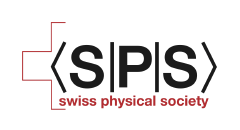YPF 2021 - Exoplanetology
24th & 25th APRIL 2021
Online
This year, the committee of the Young Physicists Forum organized a series of lectures focusing on “Exoplanetology” during the weekend of the 24th and 25th of April. Due to the COVID-19 pandemic, the event had to be carried out online. Registration was possible for all physics students of Swiss Universities as well as for everyone else interested in joining. There was no participation fee because of the purely online organization. The flyer of the 2021 Young Physicists Forum can be found in Fig. 1.
2019 was a very important year for the science of exoplanets: on 10th of December, Professors Michel Mayor and Didier Queloz from the University of Geneva received the Nobel Prize in Physics “for the discovery of an exoplanet orbiting a solar-type star”, while on 18th of December the European Space Telescope CHEOPS led by the University of Bern was launched from Kourou. Thus, we have chosen to organize a Forum about exoplanetology during Spring 2020 at the University of Bern (Leading House of the NCCR PlanetS).
Several professors working in the field were enthusiastic about participating. However, because of the 2020 Spring containment, this Forum was postponed to 2021. (The 2020 Forum was organized online in September 2020 and focused on “Interdisciplinary Physics”.) Most of the invited professors were still interested in participating in the event, but unfortunately, some were no longer available at the event’s date and recommended PhD students or senior researchers working in this exciting field of Physics. Which was in fact an interesting opportunity: while the professors were evidently very experienced in giving lectures to a broad group of students, the PhD students could be more relatable to the participants and give recommendations about starting studies in the field of exoplanetology.
Soon there was a healthy mix of eight lecturers willing to show their research and let the students dive into the realm of exoplanets. The lectures were distributed in two one-hour lectures per half-day, with enough time to let the participants ask questions about the conference itself and the respective research.
The students were invited to participate by sending an invitation email to physics student associations of all Swiss Universities, which they thankfully shared with their students. Since there was no upper bound on how many people could participate in the online lectures, we let the registration open until the day before the event started. Between 20 and 35 participants joined each lecture. The number of participants was good for an online Forum compared to previous in-person events, where we were able to welcome 40 participants.
We were also happy to see some known faces from previous Forums. While there were students who joined every lecture, there were also students who just wanted to listen to their favorite lecturer or favorite subtopic, and therefore just joined a few of the available lectures. For every lecture, a committee member introduced the lecturer, while at the end, participants asked many interesting questions: often the lectures lasted for more than one hour! Fig. 2 shows a few participants, including a lecturer and committee members (instead of a classical group photo, we have a Zoom screenshot of the camera turn-on participants!).
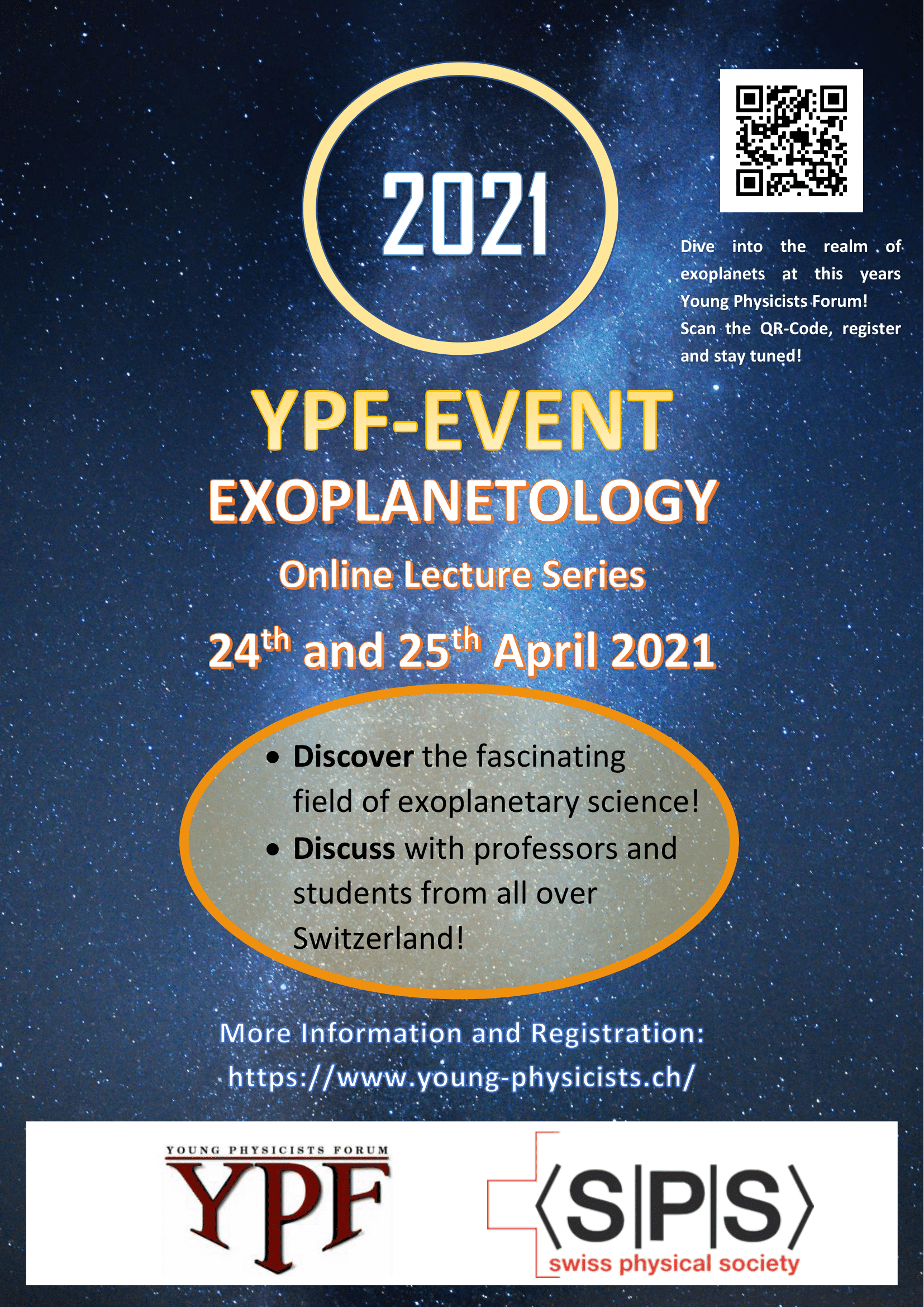
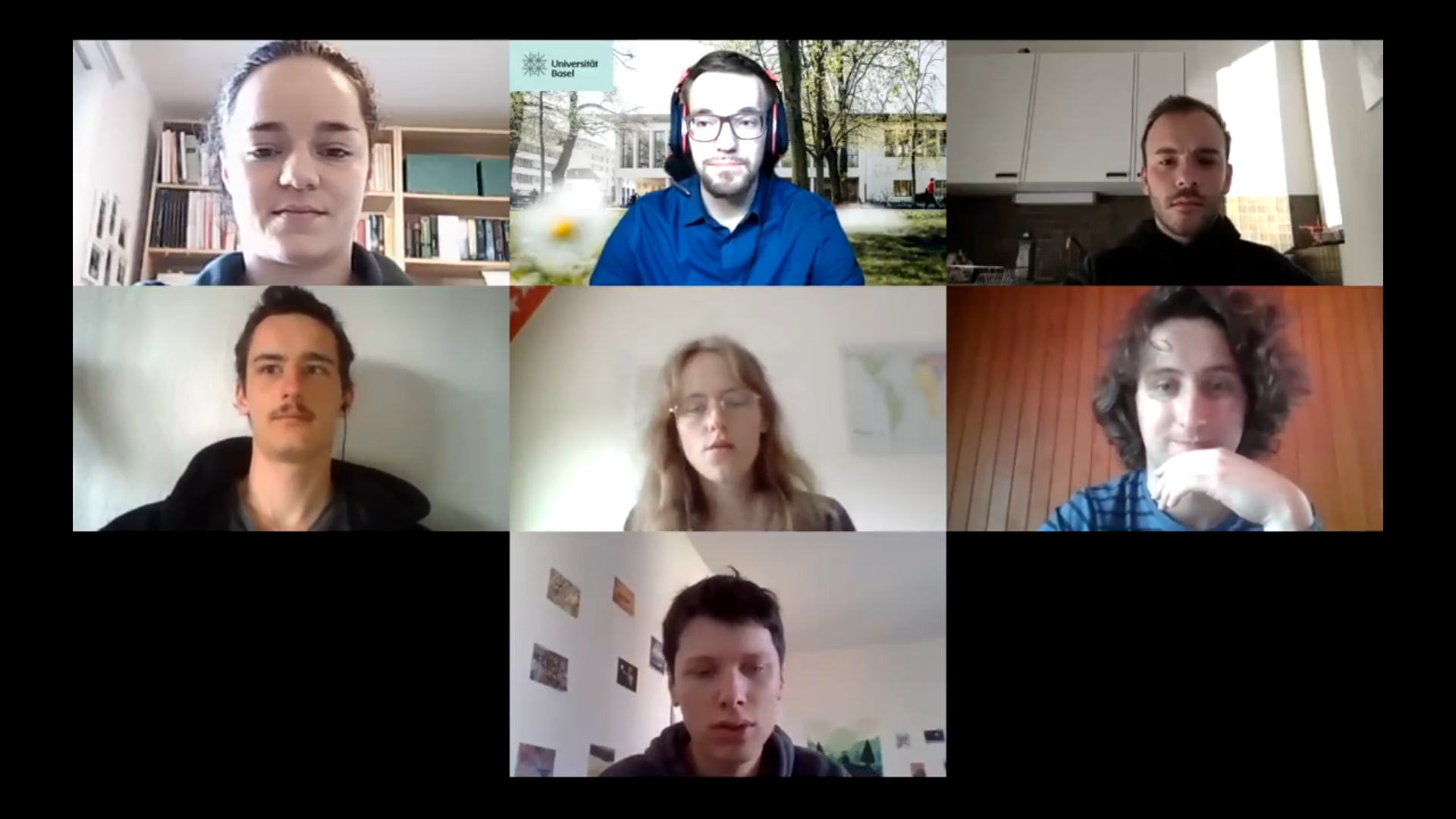
At the beginning of the event, on Saturday 24th of April, the YPF committee welcomed the participants and shortly introduced themselves, explained the idea behind this year's event and its organization. The Saturday lectures were focusing on the detection and characterization of exoplanets.
The starting lecture was given by Prof. Sascha Quanz, an associate professor for Exoplanets and Habitability at ETH Zürich, with the title “Towards the direct detection of terrestrial exoplanets”. He reviewed some of the highlights in exoplanetary science, described the existing detection methods, and illustrated a roadmap on how to directly detect and characterize a large number of terrestrial (and possibly even Earth-like) exoplanets in the coming decades. Fig. 3 shows the planned timeline of direct detection of exoplanets.
After a short break, Dr. Andrea Fortier, Instrument Scientist for the CHEOPS (CHaracterizing ExOPlanet Satellite) Science Team at the University of Bern gave a presentation with the title “CHEOPS and its latest results/discoveries”. She presented a review of the discoveries of exoplanets. The rapidly growing number of discoveries emphasized the need for characterization of these exoplanets and thus the launch of CHEOPS, which acquires images allowing for precise measurements of exoplanets' radii through the transit photometry technique. Dr. Fortier further gave an overview of the CHEOPS construction phase, its challenges, and its current operation. Fig. 4 shows some characteristics of the CHEOPS satellite.
On Saturday afternoon, Chloe Fisher, PhD student at the University of Bern who is researching the development of atmospheric retrieval methods for extrasolar planets, gave a lecture titled “Studying Exoplanet Atmospheres from Earth and Space (with Machine Learning)”. She described the characterization of exoplanetary atmospheres and described the methods to study these atmospheres by using data from both space and ground-based telescopes. She highlighted a machine learning method known as “Random Forest” and explained how to use it to advance the analysis of exoplanet atmospheres. Fig. 5 shows an overlook of the characterization of exoplanets’ atmospheres.
The last lecture on Saturday was held by Prof. Francesco Pepe. He is professor and director of the Department of Astronomy at the University of Geneva and Principal Investigator of the ESPRESSO consortium (Echelle Spectrograph for Rocky Exoplanet- and Stable Spectroscopic Observations). His presentation, “Exoplanets: From the first detection to their characterization”, was a perfect mixture between a summary of previously discussed topics and an introduction to more observational techniques used in exoplanetary science. The historical overview he gave was focusing on how, during the past 15 years, the domain of exoplanetary sciences extended to the detailed characterization of the exoplanets’ dynamics, composition, as well as their atmospheres, made possible by the refinement and improvement of observational techniques. Fig. 6 illustrates the population of known exoplanets so far.
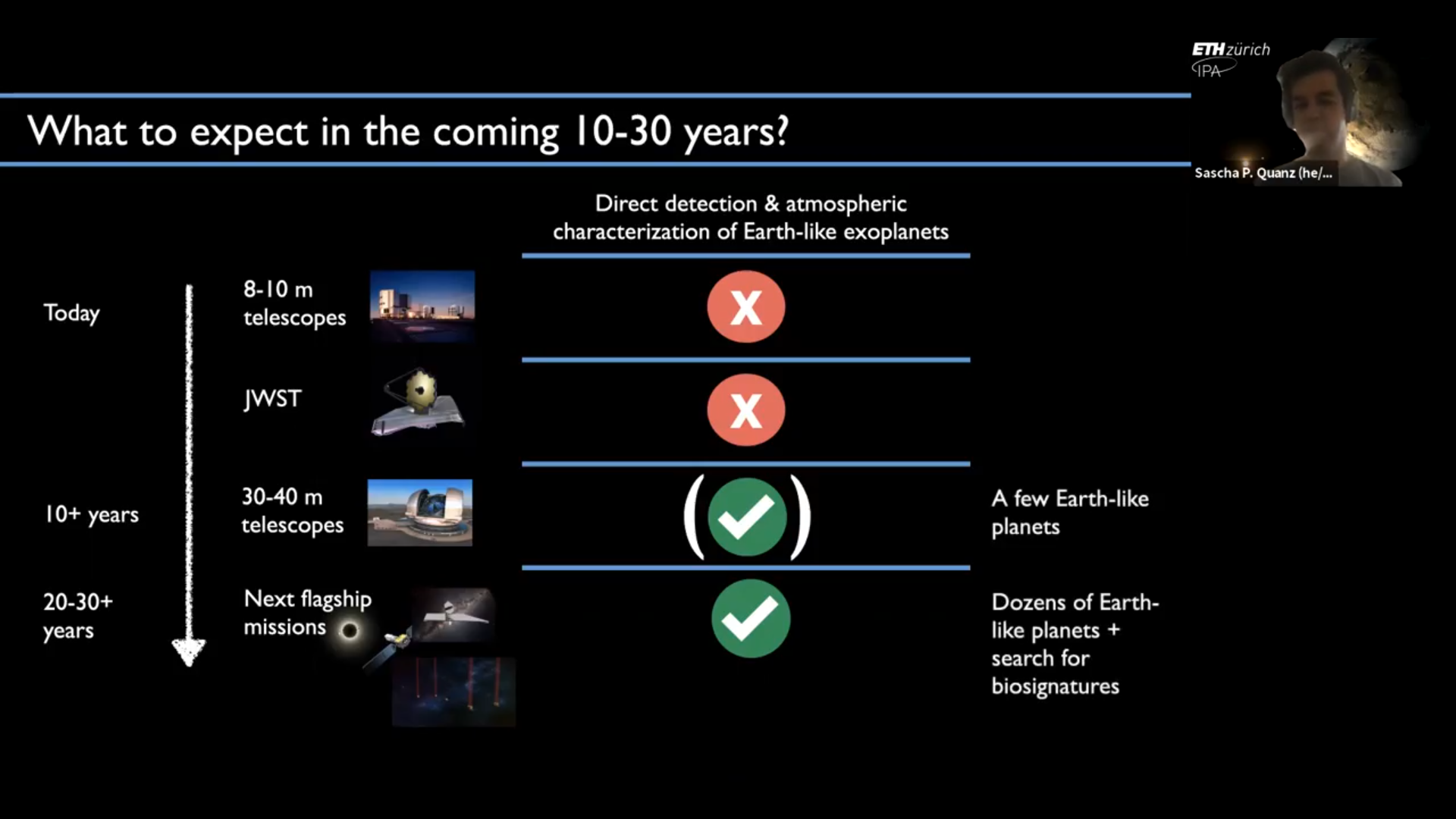
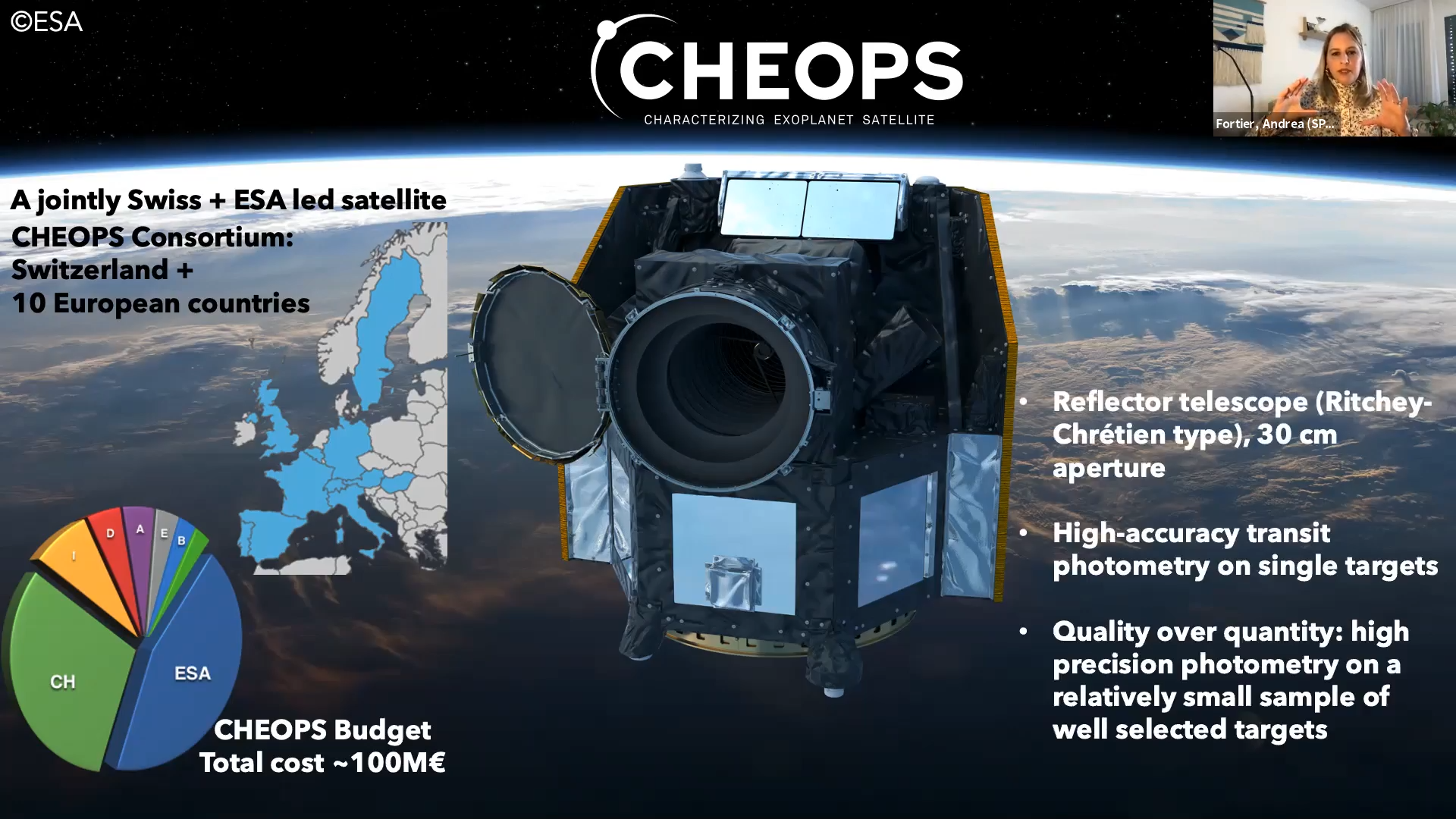

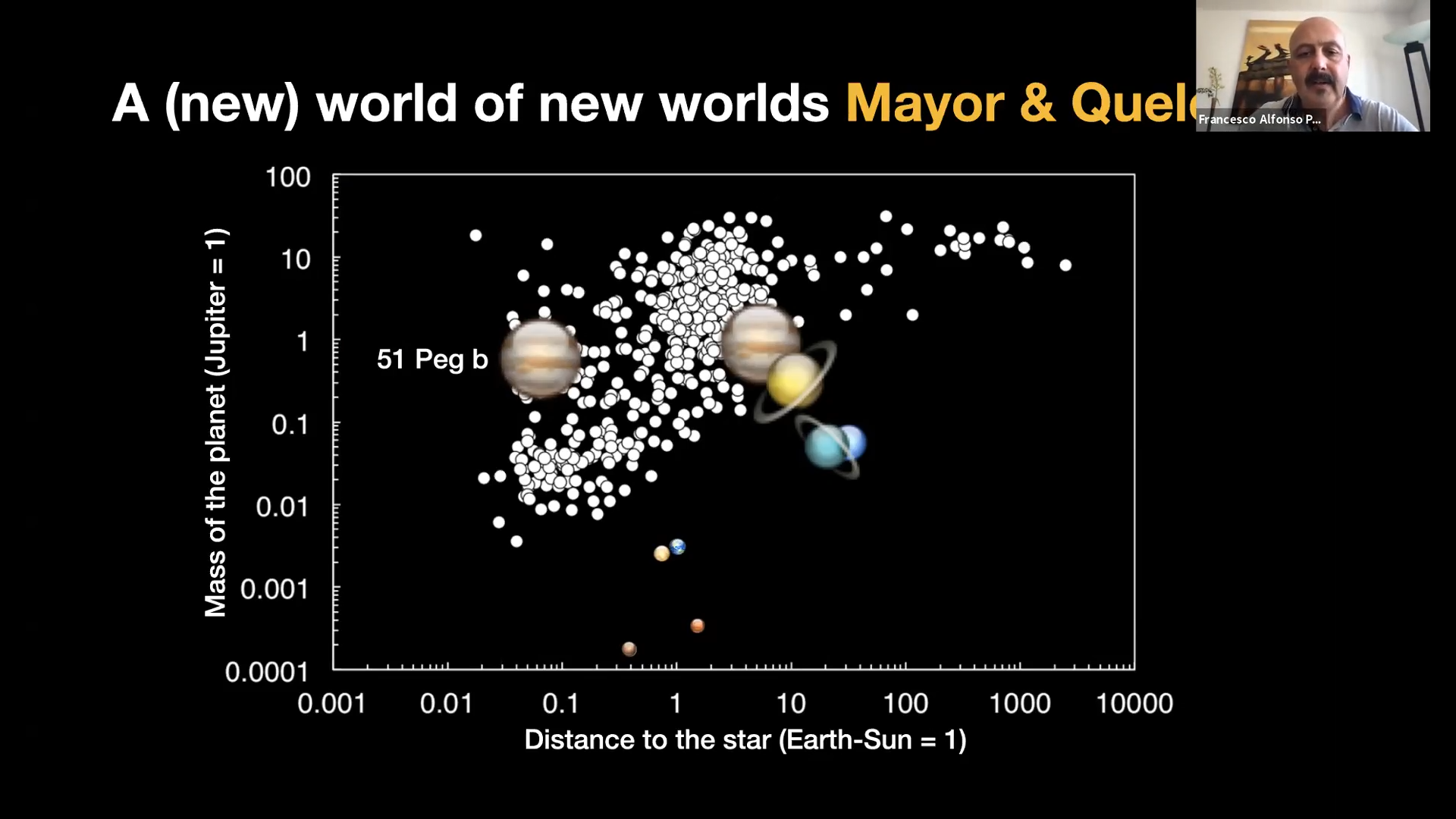
The four lectures given on Sunday 25th of April focused on planet formation, including the theoretical, numerical, and historical aspects incorporated in this topic and on habitability of exoplanets.
On Sunday morning, the participants were greeted by a lecture given by Claudio Valetta, PhD student in Computational Physics at the Institute for Computational Science of the University of Zürich, who is currently studying the evolution of giant planets with heavy-element enrichment. His lecture, “Planet formation: How do planets form?” described the current understanding of how planets are formed, what planets are made of, and what controls planetary diversity. This young field of research is still rapidly evolving and many questions remain unanswered. This is an important aspect, which could motivate students to start their PhD or Master’s thesis in this exciting field. Fig. 7 shows the classical theory of star formation of our Solar System that does not fit alone all the observed stellar systems since 1995.
The following lecture was held by Prof. Christoph Mordasini, professor in the Division of Space Research and Planetary Sciences at the University of Bern, currently researching in the PlanetsInTime research group. The title of his presentation was “Testing planet formation and evolution theory with observations of extrasolar planets”. He started his lecture with an overview of some of the most important observational constraints before proceeding to describe how the “distillate” of the results of theoretical models on the physical processes governing planet formation can be combined into one global model, describing the formation and evolution of entire planetary systems end-to-end, from the origins to the present day. He explained how the results of such models are confronted with reality via comparisons on the population level, uncovering many discrepancies, thus pointing at the shortcomings of the current understanding and identifying where future research should be developed. Fig. 8 shows an analogy between our current knowledge of exoplanets and a past (not accurate) view of the Earth's geography to be compared to the knowledge we expect in a decade.
After a lunch break, the lecture series continued with Prof. Brice-Olivier Demory, CSH SNF Professor in Astronomy/Astrophysics at the University of Bern, who is currently researching the Detection and Characterisation of exoplanets. He started his presentation on “The quest for habitable worlds and a look back at Earth” by describing the recent breakthroughs in exoplanet science including the detection of the TRAPPIST-1 system. He detailed the prospects of characterizing life in our solar system and beyond within the next decade before continuing to present a new experiment currently in the design phase, aiming at demonstrating the remote detectability of bio-signatures by using spectro-polarimetry. He explained how applications using this technique include novel research in Earth remote sensing and could even revolutionize brain cancer diagnosis and staging techniques. Fig. 9 compares the TRAPPIST-1 system with the Solar System, showing especially the circumstellar habitable zone (in green).
The closing lecture was given by Marco Cilibrasi, PhD student at the University of Zürich, where he is studying the numerical methods for planet formation processes. His lecture was titled “State of the art of the theoretical and numerical side of planet formation”, in which he showed the early theories and results that provided a first understanding of the formation of giant and terrestrial planets. He mentioned the newest findings, involving even the formation of moons and rings. He focused on the techniques and methods used in the community and especially at the ETHZ and University of Zürich. Fig. 10 shows the outline of this work.

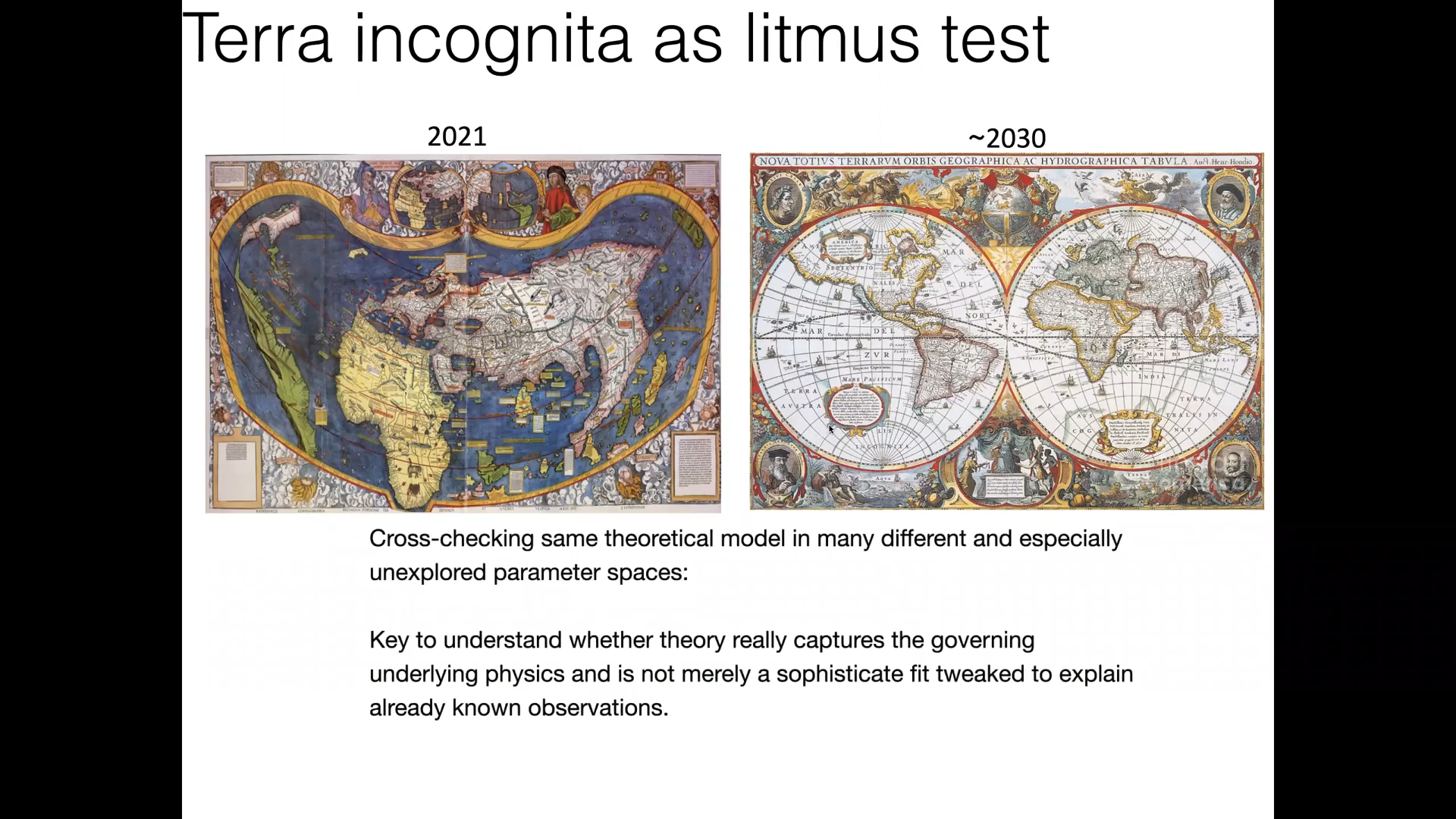
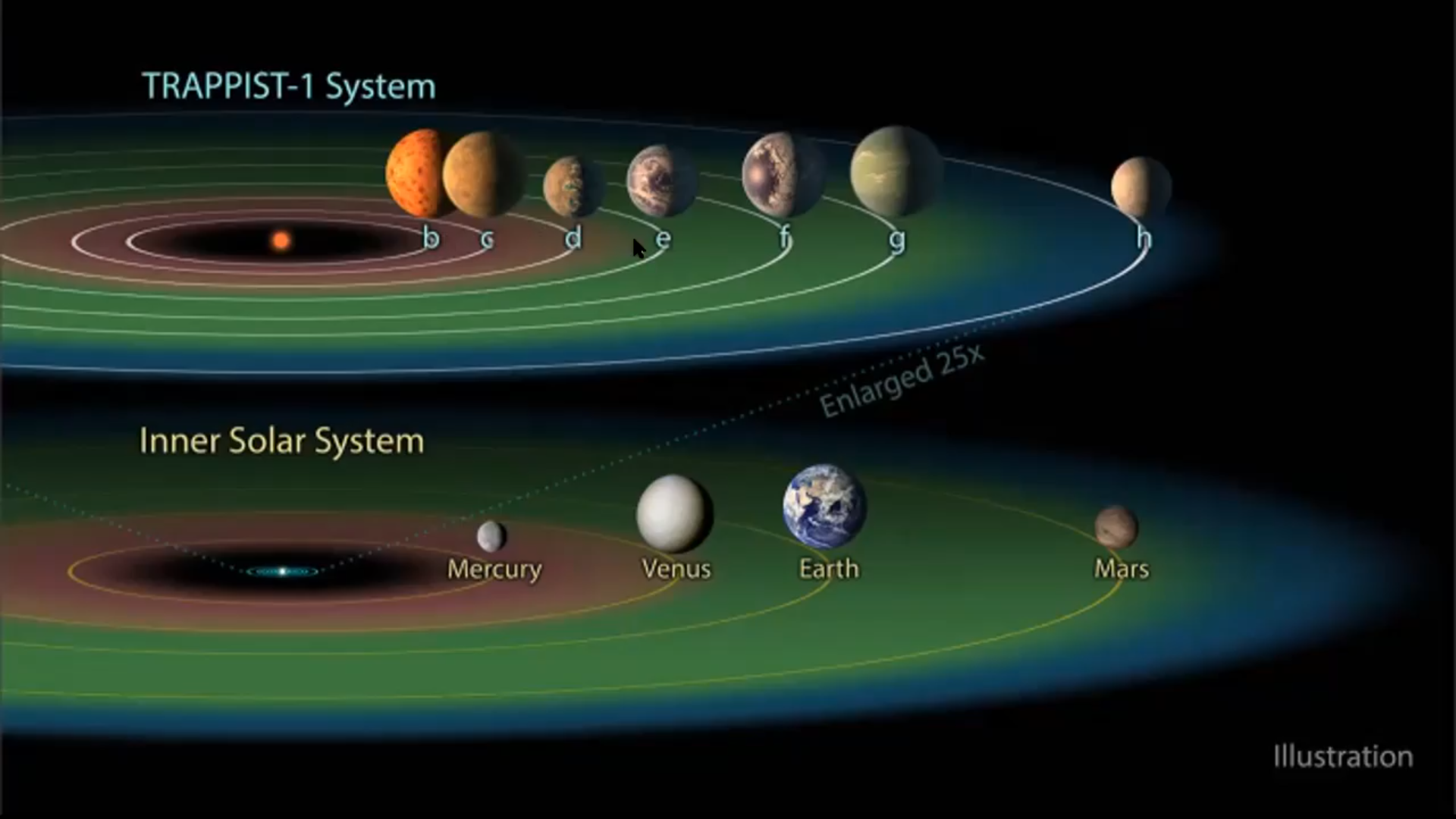
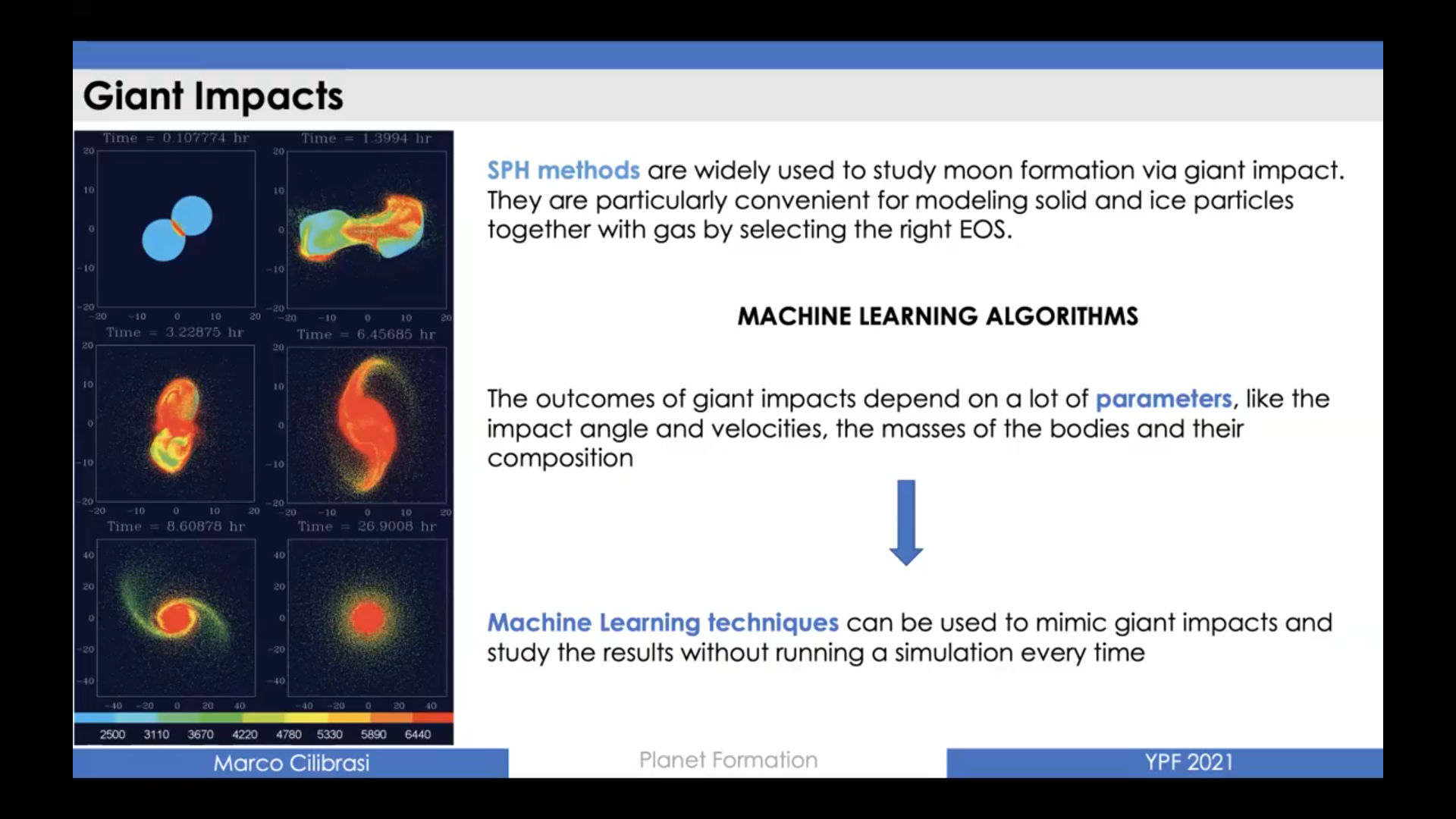
After these two days with eight fascinating lectures, it was then time to close this journey into the discovery and characterization of exoplanets and their related topics. We saw that it is a very hot subject with a lot of discoveries done and still to be done. The next step is to search for extraterrestrial life, and, maybe someday the journey towards exoplanets will not be purely imaginary anymore! To thank our lecturers for their time and availability to share their passion and knowledge we offer them boxes of chocolates. We also were very happy to see so many participants interested in discovering more about exoplanets and asking many interesting questions to the lecturers.
We may note that it is a real proof of interest and motivation that students want to follow Zoom lectures in their free time while they have been doing their entire studies in an online format for over a year. This past year has not been an easy one for studying, but the demand to learn more about science is still here! The online aspect of the Forum allows us to offer a free weekend accessible from everywhere, but this positive point does not fully counterbalance the loss of social communication during the Forum, which is generally full of discussions about physics, the Universe, life, and everything.
Toni Berger, Edwin Genoud-Prachex and Anna Lüber
This review is an extended version of the review first published in SPS Communications No. 65, November, 2021


